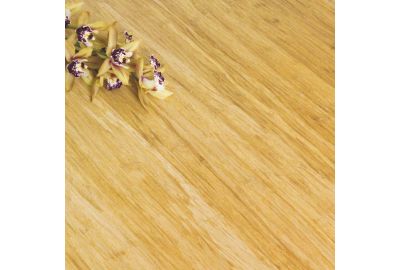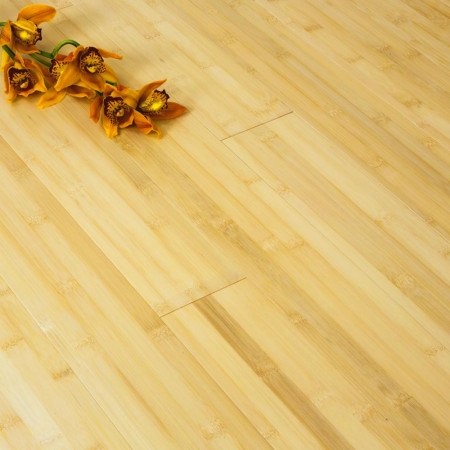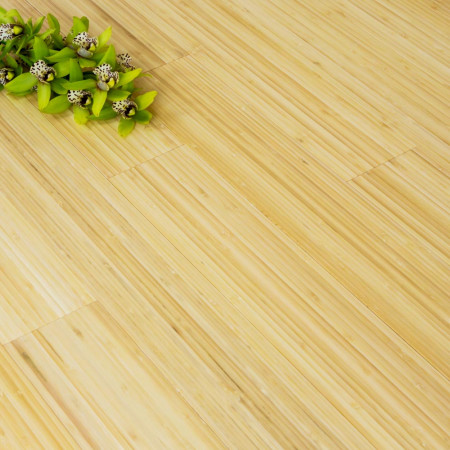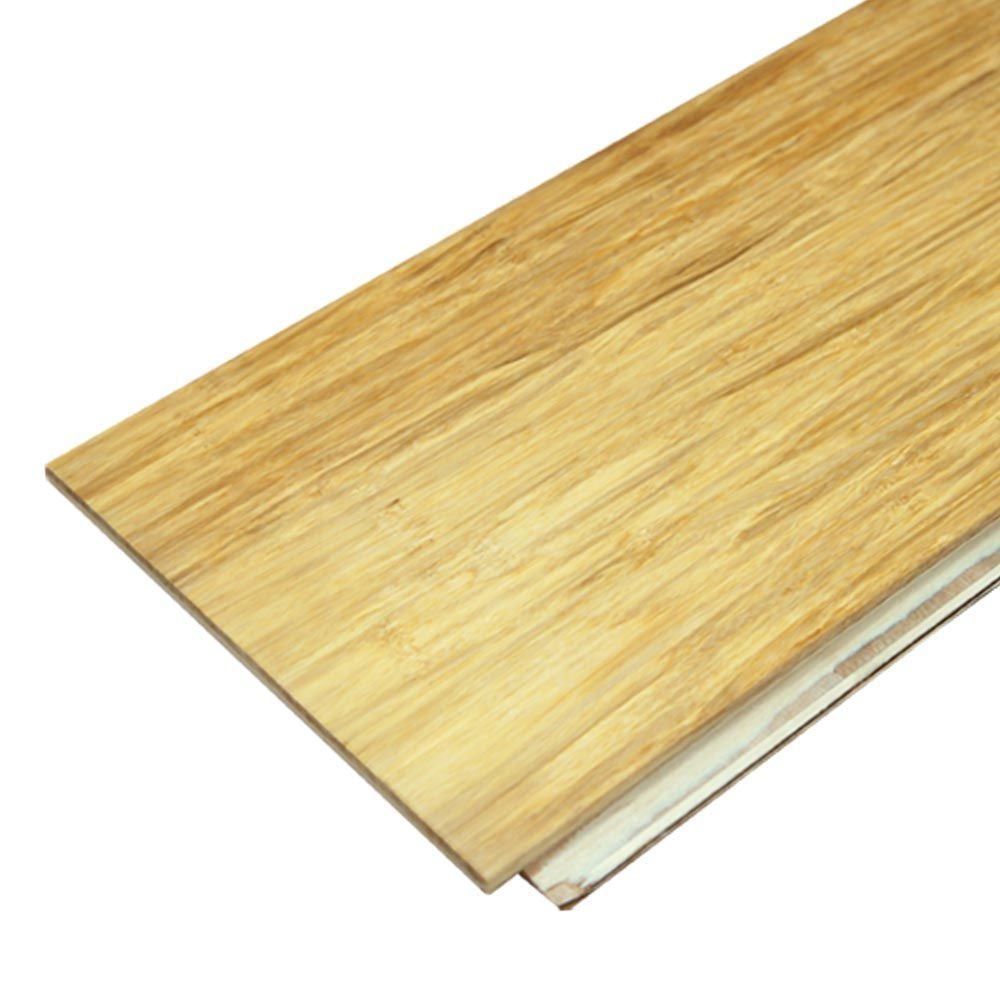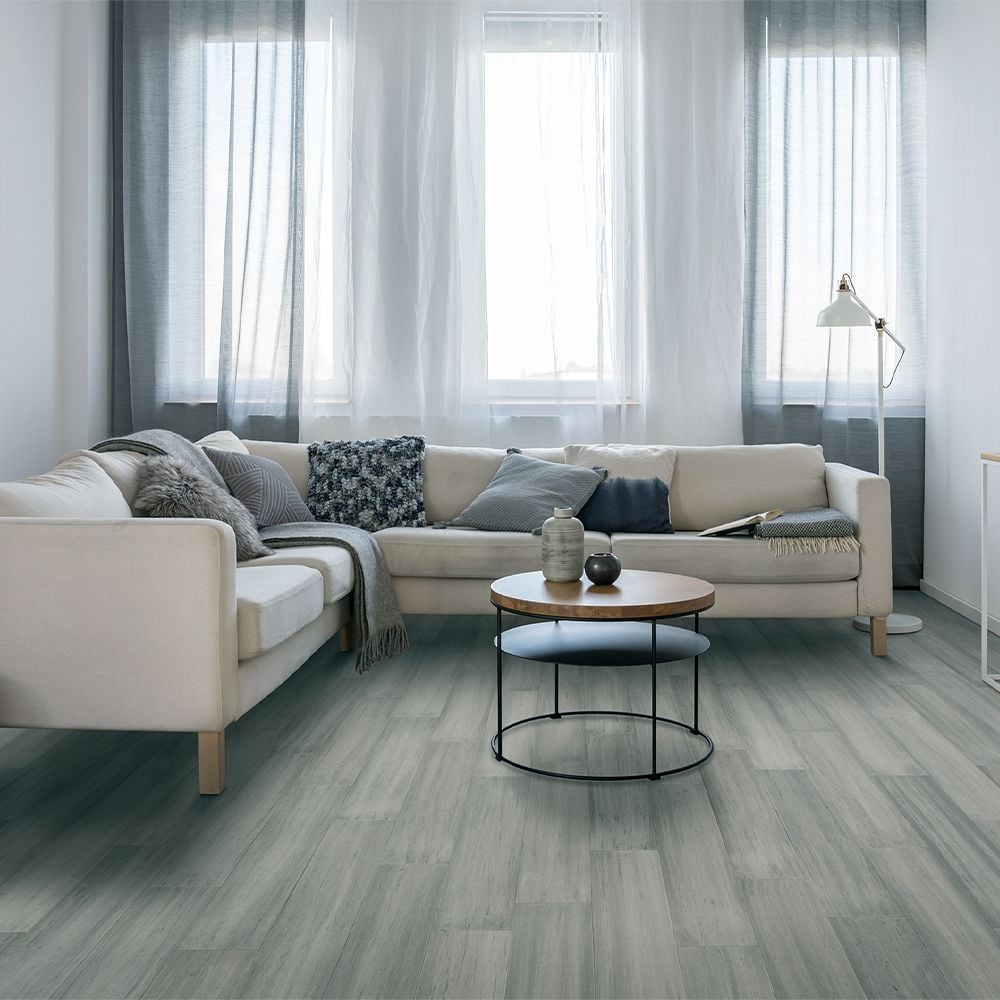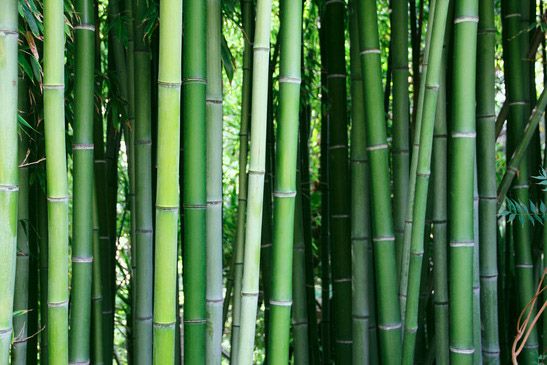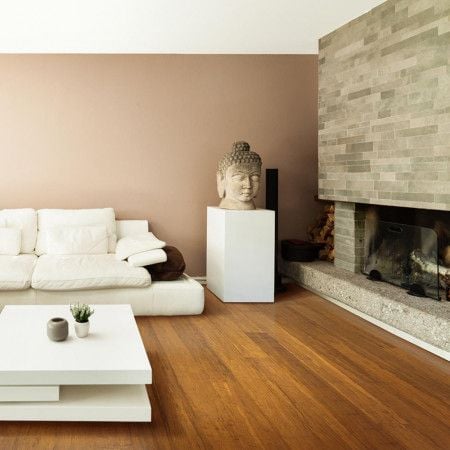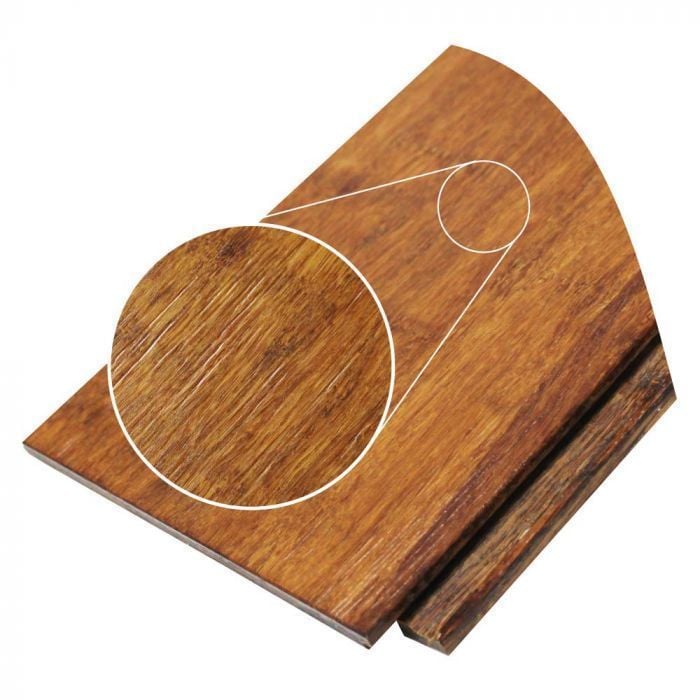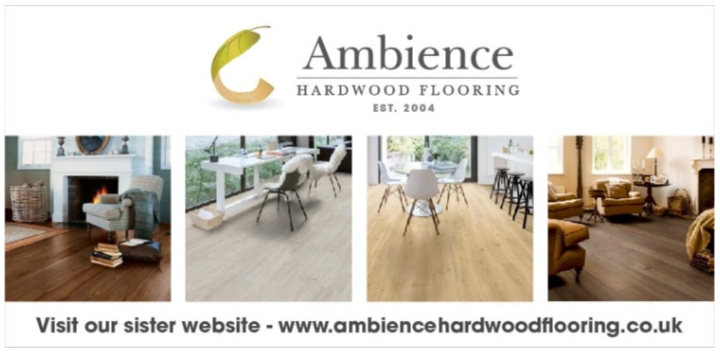Bamboo flooring is becoming a popular alternative to traditional hardwood flooring as it has physical similarities to hardwood but is more durable, eco-friendly and sustainable. Bamboo is not wood, it is a grass native to China that is cut down into strips or strands, dried and machined into flooring planks. It is available in a variety of styles, colours and finishes, and because it is a dimensionally stable flooring material, it can be floated over an underlay, used with underfloor heating, and installed in areas where humidity and temperature fluctuates significantly.
What types of bamboo flooring are available?
Bamboo flooring is available in three different constructions: Horizontal, vertical and strand woven.
Horizontal bamboo Strips of bamboo are glued together horizontally to form the plank of flooring. The bamboo grain is more evident as it appears wider on the surface of the floor.
Vertical bamboo Strips of bamboo are glued together vertically to form the plank of flooring. The bamboo grain is thinner and less evident on the surface of the floor.
Strand woven bamboo Strands of bamboo are woven together and compressed under extreme heat and pressure to form the plank of flooring. The bamboo grain is random. Strand woven bamboo is harder than any wood flooring. Horizontal, vertical and strand woven are available in both solid bamboo and engineered bamboo planks, with either a tongue and groove or click system profile.
What colours and finishes of bamboo flooring are available?
The main two colours of bamboo flooring are natural and carbonised:
Natural bamboo This is the natural colour of bamboo, offering blonde and yellow tones.
Carbonised bamboo The bamboo has been smoked, offering light and dark brown tones. Bamboo flooring is also available in a variety of colour stains and finishes, including handscraped, which offers a distressed, traditional appearance. All bamboo flooring is pre-finished with a lacquer.
Matching bamboo flooring accessories are also available to provide finishing touches to a room.
What makes bamboo flooring eco-friendly?
Bamboo is a grass, which grows much faster than wood, therefore making it a highly renewable material. Bamboo can be harvested every 5 years compared to 20-30 years for most wood. It does not need to be re-planted after it has been farmed as the root remains intact meaning that it will continue to grow.
What are the advantages of bamboo flooring?
Bamboo flooring has many advantages, including:
• Eco-friendly flooring material
• Inexpensive flooring material
• Harder and more durable than hardwood flooring
• Available in a variety of styles, colours and finishes
• Quick and easy to install
• Can be used with underfloor heating
• Can be loose laid over an underlay (does not need fixing in position)
• Can be installed in areas of fluctuating temperature and humidity
• Very stable product
• More moisture resistant than hardwood flooring
• Easy to look after

